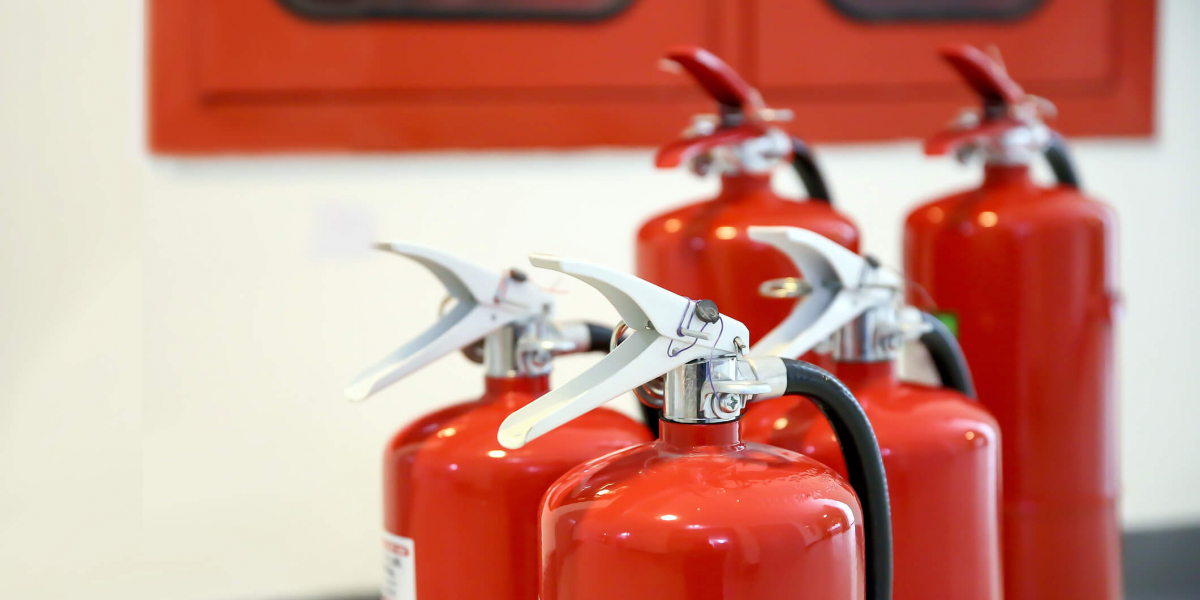fire alarm security systems are vital to ensuring the safety of building occupants, protecting property, and mitigating the devastating effects of fire. Whether in a residential, commercial, or industrial setting, the early detection of fire and the prompt alerting of occupants can be the difference between life and death. Fire alarms not only serve as a warning of potential danger but also activate other fire protection measures, such as sprinklers and emergency lighting, to minimize damage and enhance safety.
In this article, we explore the importance of fire alarm security systems, the components that make them effective, and how they contribute to overall fire safety.
The Importance of Fire Alarm Security
Fires can break out at any time and often in areas where people may be unaware of the danger, such as during the night or when a building is unoccupied. The rapid spread of fire and smoke can lead to significant loss of life and property damage. This is where fire alarm systems come in—they provide an early warning that can make all the difference in a fire emergency. Here’s why fire alarm security is so essential:
Early Detection of Fire: The primary function of a fire alarm system is to detect the presence of fire as soon as it starts. Smoke, heat, or flame detection systems can quickly identify dangerous conditions, alerting occupants and emergency responders to take action before the fire spreads.
Alerting Occupants and Emergency Services: Fire alarms provide an immediate audible or visual alert to building occupants, giving them the chance to evacuate safely. In some advanced systems, fire alarms can automatically alert emergency services (e.g., fire departments), ensuring a swift response.
Preventing Loss of Life and Property: By detecting a fire in its earliest stages, fire alarm systems can help minimize damage to property and save lives. They give occupants time to evacuate and allow responders to intervene before the fire grows out of control.
Compliance with Legal Requirements: Many regions have strict fire safety regulations requiring the installation of fire alarm systems in certain types of buildings. Whether in commercial buildings, schools, hospitals, or multifamily residences, fire alarm systems are a legal requirement to ensure the safety of occupants.
Integration with Other Fire Safety Systems: Fire alarms can be integrated with other fire protection systems, such as sprinklers, smoke control systems, and emergency lighting, to create a comprehensive fire safety network. The coordination of these systems helps improve the overall safety of a building.
Components of a Fire Alarm Security System
A fire alarm system typically consists of several key components, each working in unison to detect and respond to fire emergencies. These components are strategically placed throughout a building to ensure complete coverage. Below are the primary elements of a fire alarm system:
Detection Devices
- Smoke Detectors: Smoke detectors are one of the most common types of fire detection devices. They work by detecting particles or changes in the air caused by smoke. There are two main types of smoke detectors:
- Ionization Smoke Detectors: These detectors use a small amount of radioactive material to detect the presence of smoke. They are more responsive to fast-flaming fires.
- Photoelectric Smoke Detectors: These detectors use a light sensor to detect smoke. They are more responsive to slow, smoldering fires.
- Heat Detectors: These devices are activated when a certain temperature threshold is exceeded or when there is a rapid rise in temperature, signaling the potential presence of a fire. Heat detectors are often used in areas where smoke detectors may be prone to false alarms, such as kitchens or boiler rooms.
- Flame Detectors: Flame detectors are used in high-risk areas where open flames are common, such as industrial settings. They detect infrared or ultraviolet radiation emitted by flames, providing quick identification of a fire source.
- Smoke Detectors: Smoke detectors are one of the most common types of fire detection devices. They work by detecting particles or changes in the air caused by smoke. There are two main types of smoke detectors:
Control Panel The control panel is the central hub of the fire alarm system. It receives signals from detection devices and activates alarms and other connected systems in response to fire hazards. The control panel is typically equipped with a display that shows the status of the system, including any active alarms and the location of the detected fire. In advanced systems, the control panel can also send notifications to remote monitoring stations or emergency responders.
Alarm Notification Devices Alarm notification devices are the components that alert building occupants to evacuate. These devices can produce loud audible alarms, visual signals (such as flashing lights), or both. The goal is to ensure that everyone in the building is alerted to the fire emergency, even if they are hearing or visually impaired.
- Audible Alarms: These alarms emit a loud sound, such as a siren or bell, to attract attention and signal that evacuation is necessary.
- Visual Alarms: Visual alarm devices, such as strobe lights or flashing signals, are used to provide alerts for individuals who may not hear audible alarms, such as those with hearing impairments.
Manual Pull Stations Manual pull stations allow people to activate the fire alarm system manually in the event of a fire. These stations are typically located near exits and throughout the building, allowing anyone who detects a fire to trigger the alarm and alert others.
Fire Alarm Signaling Devices These devices are designed to broadcast an emergency evacuation message or signal in the event of a fire. They can include:
- Public Address Systems: These systems allow emergency messages to be broadcast over loudspeakers, providing instructions for safe evacuation or other actions.
- Text Display Boards: Some fire alarm systems include visual messaging, such as digital boards or screens, that provide clear instructions on how to evacuate or respond to the fire.
Emergency Power Supply Fire alarm systems are often connected to an emergency power supply to ensure that the system remains operational during a power outage. This backup power typically comes from batteries or generators, ensuring that the fire alarm system continues to function during critical situations.
Types of Fire Alarm Systems
Fire alarm systems can be classified based on their complexity, functionality, and the size of the building they are designed to protect. The most common types include:
Conventional Fire Alarm Systems In a conventional fire alarm system, the building is divided into zones. When a fire is detected, the alarm panel indicates which zone the fire is located in. This system is simple and cost-effective, making it ideal for smaller buildings.
Addressable Fire Alarm Systems Addressable fire alarm systems are more advanced and provide greater detail. Each detection device (smoke detector, heat detector, etc.) has its own unique address. The control panel can pinpoint the exact location of the fire, which improves response time and helps firefighters quickly identify the problem area. These systems are typically used in larger buildings and more complex environments.
Wireless Fire Alarm Systems Wireless fire alarm systems use radio signals to communicate between detectors, control panels, and other devices. These systems offer flexibility in installation and are ideal for buildings where running wires is challenging, such as historic buildings or structures under renovation.
Maintenance and Testing of Fire Alarm Systems
To ensure the proper functioning of a fire alarm system, regular maintenance and testing are essential. Key actions include:
- Routine Inspections: Fire alarm systems should be inspected periodically to check for any issues such as faulty wiring, malfunctioning devices, or outdated components.
- Testing: Regular tests of smoke detectors, heat detectors, alarms, and notification devices should be conducted to verify that all parts of the system are working properly.
- Battery Replacements: In systems that rely on battery backup, regular checks and timely battery replacement are necessary to maintain system reliability.
Conclusion
Fire alarm security systems are an essential part of any building’s fire protection plan, offering early detection and prompt alerts to save lives and protect property. These systems are designed to detect fire hazards, notify occupants, and activate other fire safety measures, such as sprinklers or emergency lighting. By ensuring that fire alarm systems are properly installed, maintained, and tested, businesses, homeowners, and building managers can significantly reduce the risk of injury and property damage in the event of a fire.








